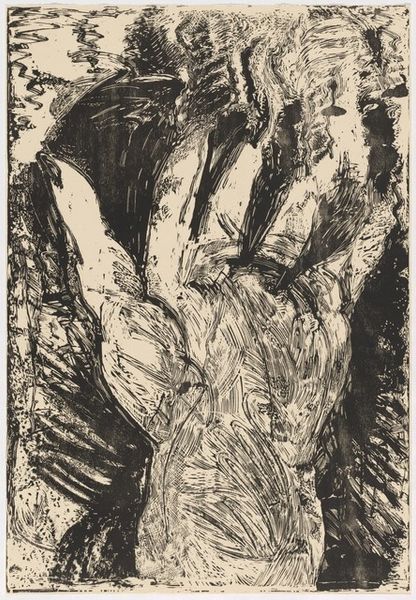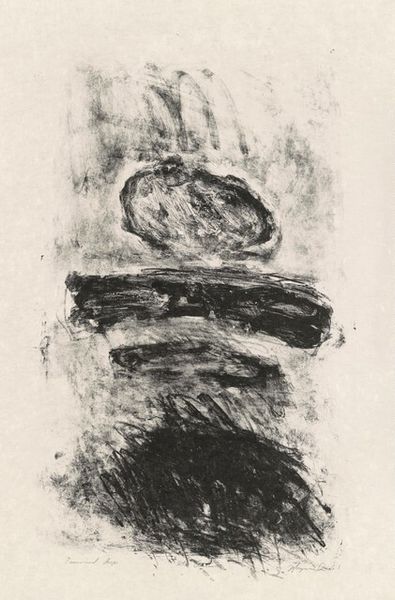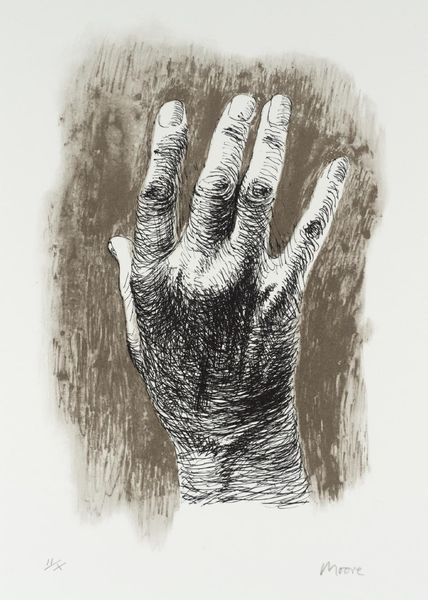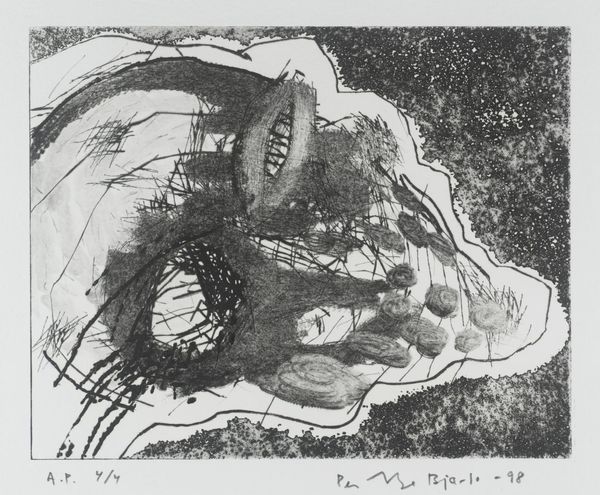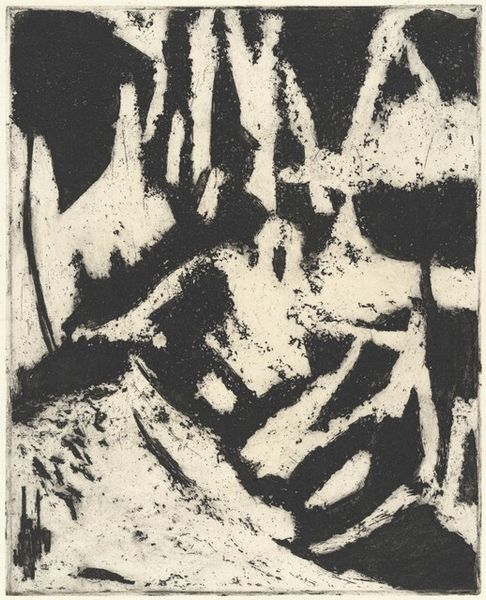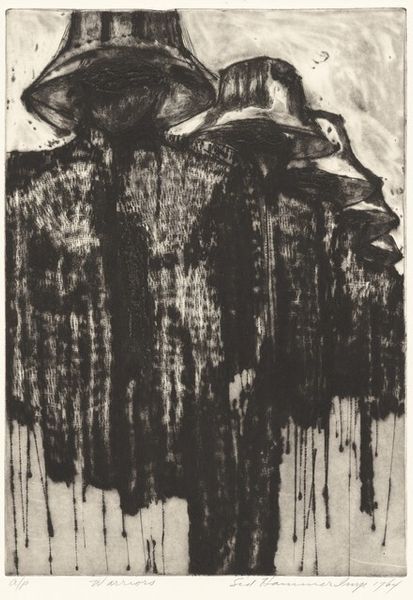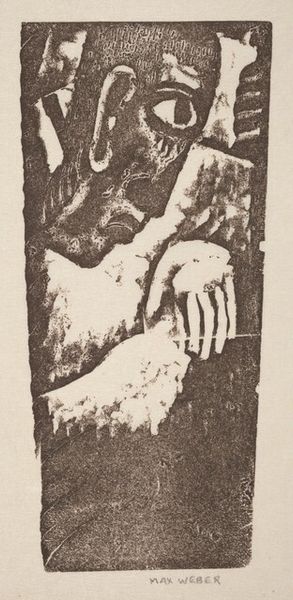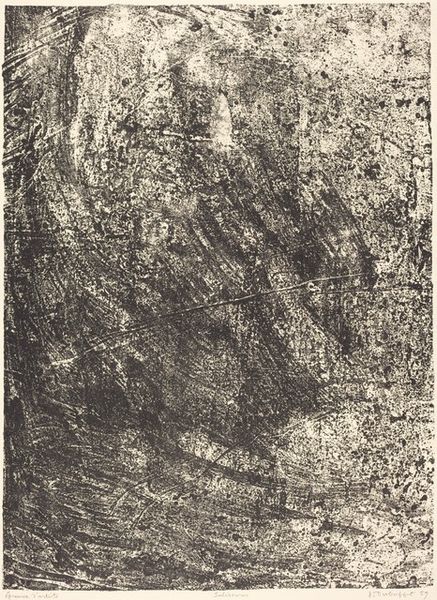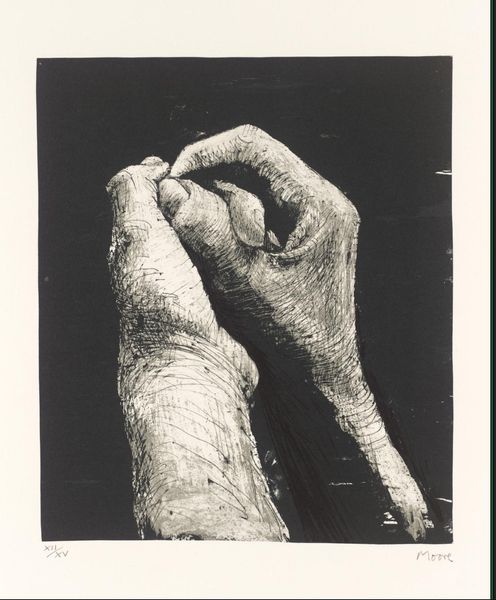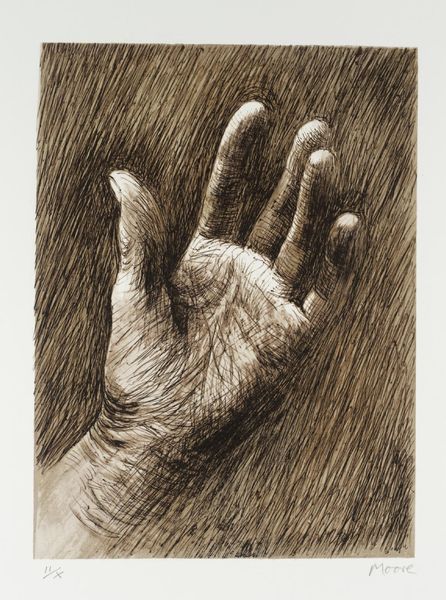![Quartet (Sheet III) [hand] by Jim Dine](/_next/image?url=https%3A%2F%2Fd2w8kbdekdi1gv.cloudfront.net%2FeyJidWNrZXQiOiAiYXJ0ZXJhLWltYWdlcy1idWNrZXQiLCAia2V5IjogImFydHdvcmtzLzI2NDM2ZDQ0LWM3ZDEtNGE2NS1iN2UwLTgzZmJlYzVkM2RhNi8yNjQzNmQ0NC1jN2QxLTRhNjUtYjdlMC04M2ZiZWM1ZDNkYTZfZnVsbC5qcGciLCAiZWRpdHMiOiB7InJlc2l6ZSI6IHsid2lkdGgiOiAxOTIwLCAiaGVpZ2h0IjogMTkyMCwgImZpdCI6ICJpbnNpZGUifX19&w=1080&q=75)
drawing, print, graphite
#
ink stage
#
portrait
#
drawing
#
rippled sketch texture
#
natural shape and form
#
organic
#
natural formation
#
rough brush stroke
# print
#
organic shape
#
incomplete sketchy
#
possibly oil pastel
#
line
#
graphite
#
natural form
#
unfinished
Dimensions: sheet: 45.09 × 35.24 cm (17 3/4 × 13 7/8 in.) overall: 90.17 × 70.8 cm (35 1/2 × 27 7/8 in.)
Copyright: National Gallery of Art: CC0 1.0
Curator: Looking at Jim Dine’s print from 1986 entitled "Quartet (Sheet III) [hand]," I immediately notice the contrast. The stark blacks against the textured grays evoke a sense of both fragility and raw power. Editor: Absolutely. The hand, rendered in what appears to be graphite or a similar medium, isn't just a hand. It's a statement on labor, on the physical connection to creation. It's worth considering Dine’s engagement with the neo-Dada movement. Dine often incorporates personal symbols into his work. Is the hand a symbol of his artistic labor? His own engagement in the act of creation? Curator: It's a powerful idea. His choice of the hand connects us to the history of labor and the tools workers need. In Dine’s early "Happenings," everyday objects became performers. Here, the hand, multiplied in its suggestion, becomes a symbol, even a protagonist, imbued with the history of art itself. Editor: I agree, the hand commands attention. Consider the composition—it’s cropped, almost monumental in scale, filling the pictorial space. There’s also a striking duality at play, a push and pull between definition and abstraction. We see meticulous, almost clinical line work alongside gestural, atmospheric washes. What are your thoughts? Curator: The work's organic feel resonates. It has what looks like unfinished and incomplete aspects of what can come off as unfinished and rough in brush stroke which contrasts greatly with how people were behaving during the art-boom in the mid-eighties when it was created. But here Dine challenges artistic ideals with more modern styles. The image's rawness suggests both a fragility and brutal force, mirroring human limitations and power. Editor: It prompts a lot of interpretations regarding process. I also can't help but think about semiotics. The hand signifies presence, action, communication… but also vulnerability, particularly with those gestural and organic qualities we touched on earlier. Dine uses simple forms but layers so many associations through their stark presentation. Curator: I think it captures something of what artists feel in society, with the struggle to stay in touch with both what one considers nature as well as all the trappings and social impositions of modern life. Editor: Definitely. "Quartet (Sheet III) [hand]" isn’t just a hand. It’s an exploration of artistic intent and a complex commentary about art's presence in society.
Comments
No comments
Be the first to comment and join the conversation on the ultimate creative platform.

